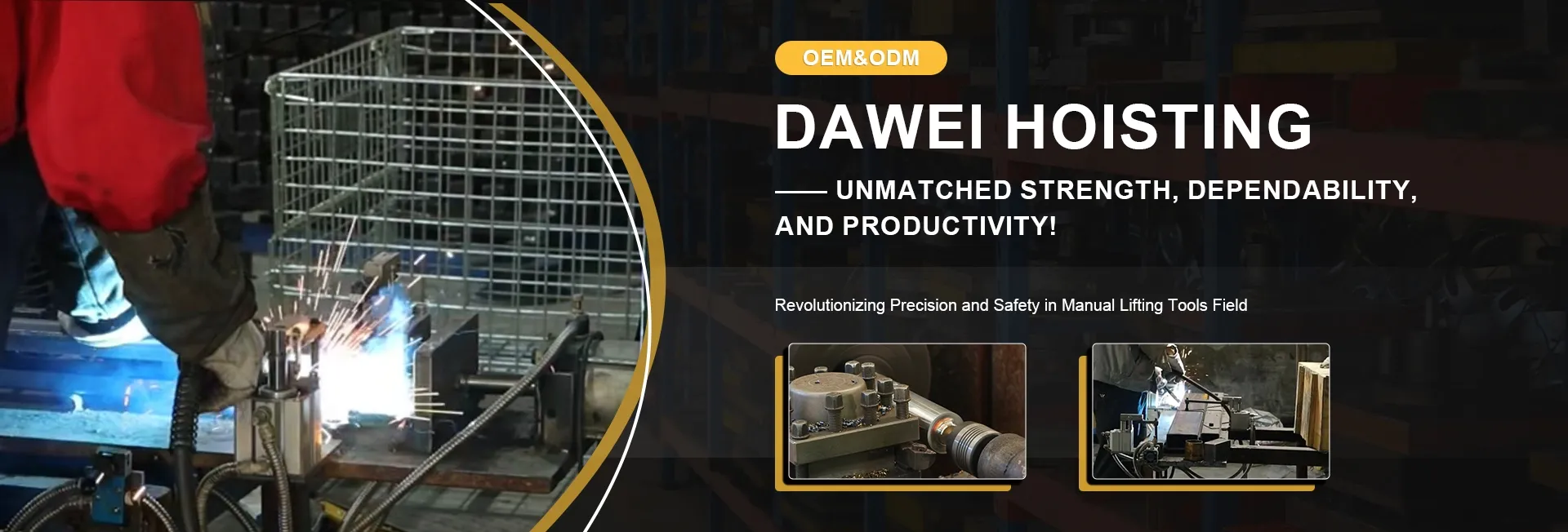bridge and gantry crane
Understanding Bridge and Gantry Cranes
Cranes are essential pieces of equipment in various industries, especially in construction, shipping, and manufacturing. Two of the most common types of cranes are bridge cranes and gantry cranes. While both are designed to lift and move heavy loads, they possess distinct characteristics that make them suitable for specific applications.
What is a Bridge Crane?
Bridge cranes, also known as overhead cranes, consist of a hoisting mechanism that moves along a horizontal bridge, which is supported by two rails fixed on either side of the workspace. The entire system operates along a fixed path and is typically installed in large, open spaces like warehouses, factories, or assembly lines.
Bridge cranes are highly versatile and can lift heavy loads ranging from a few tons to over 100 tons, depending on their design and capacity. They are commonly used for tasks such as transporting materials across a production area, loading and unloading goods from trucks, or moving heavy machinery. The prominent advantage of bridge cranes is their ability to utilize vertical space, thereby maximizing the efficiency of the workspace.
Installation of a bridge crane usually involves a significant investment in both time and resources. The structure must be engineered to accommodate the specific needs of the operation, including the length of the bridge, the height at which it operates, and the load capacity required. Safety features such as limit switches, load diagnostics, and emergency stop mechanisms are critical to ensuring safe operation.
What is a Gantry Crane?
Gantry cranes, on the other hand, are similar in function to bridge cranes but differ significantly in design and application. Unlike bridge cranes, which are fixed in place, gantry cranes have a movable design that can traverse along the ground. They typically consist of a platform supported by two or more legs, allowing the entire assembly to move across a designated area.
Gantry cranes are often used in outdoor settings, such as shipyards or construction sites, where they are utilized for loading and unloading materials from trucks and containers or for lifting equipment during assembly and maintenance. They are particularly useful in spaces where overhead structures cannot be installed or where mobility is required.
bridge and gantry crane

One of the main advantages of gantry cranes is their cost-effectiveness compared to bridge cranes. They are generally less expensive to manufacture and can be used in locations where a fixed overhead crane would be impractical. Additionally, they offer flexibility in terms of placement, as they can be positioned as needed rather than being permanently installed.
Key Differences Between Bridge and Gantry Cranes
While both types of cranes are designed to handle heavy loads, several key differences set them apart.
1. Design and Structure Bridge cranes are built with a fixed overhead structure, while gantry cranes feature a freestanding design with legs.
2. Mobility Gantry cranes can be moved from one location to another, making them versatile for various tasks, while bridge cranes are confined to a dedicated track.
3. Space Requirements Bridge cranes require more vertical space due to their overhead installation, whereas gantry cranes can be designed to work in areas with limited height.
4. Cost Generally, gantry cranes are more affordable than bridge cranes, making them an attractive option for smaller operations or temporary setups.
Conclusion
In summation, bridge cranes and gantry cranes are both invaluable assets for industries that require efficient handling of heavy materials. Their unique designs and capabilities cater to different operational needs, making it essential for businesses to choose the right type of crane based on specific requirements. Understanding the nuances of each crane type can help companies optimize their operations, improve safety, and enhance productivity. Regardless of the choice, investing in high-quality crane technology is crucial to ensure reliable performance and longevity in demanding work environments.
-
Unlock Seamless Relocation with Our Heavy Equipment Moving ExpertiseNewsJun.06,2025
-
Unleash Unrivaled Flexibility with Our Adjustable Gantry CraneNewsJun.06,2025
-
Unleash Heavy-Duty Efficiency with Our Industrial Gantry Crane SolutionsNewsJun.06,2025
-
Revolutionize Steel Handling with Our Magnetic Lifter RangeNewsJun.06,2025
-
Master Equipment Mobility with Premium Machinery Mover SolutionsNewsJun.06,2025
-
Elevate Your Material Handling with Magnetic Lifter TechnologyNewsJun.06,2025
-
YS Permanent Lifting Magnets: The Smarter Way to Handle SteelNewsMay.22,2025
